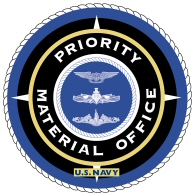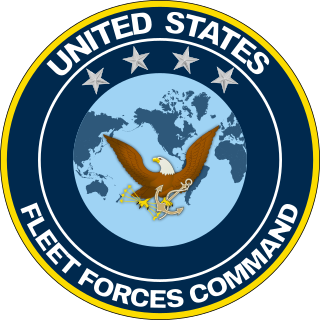
The United States Fleet Forces Command (USFF) is a service component command of the United States Navy that provides naval forces to a wide variety of U.S. forces. The naval resources may be allocated to Combatant Commanders such as United States Northern Command (USNORTHCOM) under the authority of the Secretary of Defense. Originally formed as United States Atlantic Fleet (USLANTFLT) in 1906, it has been an integral part of the defense of the United States of America since the early 20th century. In 2002, the Fleet comprised over 118,000 Navy and Marine Corps personnel serving on 186 ships and in 1,300 aircraft, with an area of responsibility ranging over most of the Atlantic Ocean from the North Pole to the South Pole, the Caribbean Sea, Gulf of Mexico, and the waters of the Pacific Ocean along the coasts of Central and South America.

The Military Sealift Command (MSC) is an organization that controls the replenishment and military transport ships of the United States Navy. Military Sealift Command has the responsibility for providing sealift and ocean transportation for all US military services as well as for other government agencies. It first came into existence on 9 July 1949 when the Military Sea Transportation Service (MSTS) became solely responsible for the Department of Defense's ocean transport needs. The MSTS was renamed the Military Sealift Command in 1970.

The United States Transportation Command (USTRANSCOM) is one of the eleven unified commands of the United States Department of Defense. In both times of peace and war, USTRANSCOM's role is to provide the Department of Defense with air, land, and sea transportation. USTRANSCOM was founded in 1987 and is based at Scott Air Force Base in Illinois.
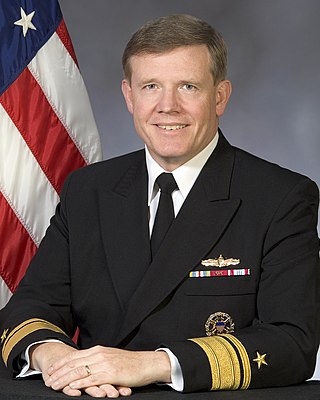
Rear Admiral Robert Dunham Reilly Jr. was a United States Navy Surface Warfare Flag Officer who retired from active duty in January 2010 after 34-plus years of military service. His last assignment was as the 24th commander of the U.S. Navy's Military Sealift Command (MSC).

USNS Observation Island (T-AGM-23) was built as the Mariner-class merchant ship Empire State Mariner for the United States Maritime Commission, launched 15 August 1953, and operated by United States Lines upon delivery on 24 February 1954, making voyages for the Military Sea Transportation Service (MSTS) until going into reserve at Mobile, Alabama on 9 November 1954.
The structure of the United States Navy consists of four main bodies: the Office of the Secretary of the Navy, the Office of the Chief of Naval Operations, the operating forces, and the Shore Establishment.

The Commander, Submarine Force, U.S. Pacific Fleet (COMSUBPAC) is the principal advisor to the Commander, United States Pacific Fleet (COMPACFLT) for submarine matters. The Pacific Submarine Force (SUBPAC) includes attack, ballistic missile and auxiliary submarines, submarine tenders, floating submarine docks, deep submergence vehicles and submarine rescue vehicles throughout the Pacific.
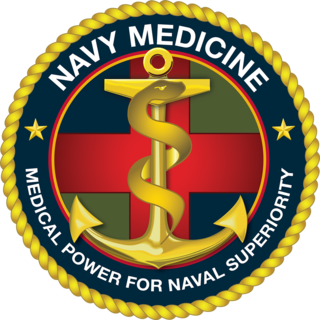
The Bureau of Medicine and Surgery (BUMED) is an agency of the United States Department of the Navy that manages health care activities for the United States Navy and the United States Marine Corps. BUMED operates hospitals and other healthcare facilities as well as laboratories for biomedical research, and trains and manages the Navy's many staff corps related to medicine. Its headquarters is located at the Defense Health Headquarters in Fairfax County, Virginia. BUMED has 41,930 medical personnel and more than a million eligible beneficiaries.

The Charleston metropolitan area is an urban area centered around Charleston, South Carolina. The U.S. Office of Management and Budget designates the area as the Charleston-North Charleston, SC Metropolitan Statistical Area, a metropolitan statistical area used for statistical purposes only by the United States Census Bureau and other federal agencies. The OMB defines the area as comprising Berkeley, Charleston and Dorchester counties, an area with 799,636 residents in the 2020 census. Principal cities include Charleston, North Charleston, and Summerville. The area is commonly referred to as the Tri-County Area or the Lowcountry, though the latter term has historically referred to South Carolina's southern coast in general.

The Operational Test and Evaluation Force (OPTEVFOR) is an independent and objective agency within the United States Navy for the operational testing and evaluation (OT&E) of naval aviation, surface warfare, submarine warfare, C4I, cryptologic, and space systems in support Navy and Department of Defense acquisition programs.

The Naval Supply Systems Command (NAVSUP) serves as the supply command for the United States Navy for providing supplies, services, and support to both the Navy and the United States Marine Corps.

The Commander, Naval Air Force Atlantic is the aviation Type Commander (TYCOM) for the United States Naval aviation units operating primarily in the Atlantic under United States Fleet Forces Command. Type Commanders are in administrative control (ADCON), and in some cases operational control (OPCON) of certain types of assets assigned to the Pacific and Atlantic Fleets. AIRLANT is responsible for the material readiness, administration, training, and inspection of units/squadrons under their command, and for providing operationally ready air squadrons and aircraft carriers to the fleet.

U.S. Navy type commands perform administrative, personnel, and operational training functions in the United States Navy for a "type" of weapon system within a fleet organization.

Joint Base Pearl Harbor–Hickam (JBPHH) is a United States military base on the island of Oahu, Hawaii. It is an amalgamation of the United States Air Force's Hickam Air Force Base and the United States Navy's Naval Station Pearl Harbor, which were merged in 2010.

Submarine Squadron 15 is a squadron of submarines of the United States Navy based at Naval Base Guam.

Naval Support Activity Charleston, originally designated Naval Weapons Station Charleston, is a base of the United States Navy located on the west bank of the Cooper River, in the cities of Goose Creek and Hanahan South Carolina. The base encompasses more than 17,000 acres (69 km²) of land with 10,000 acres (40 km²) of forest and wetlands, 16-plus miles of waterfront, four deep-water piers, 38.2 miles (61.5 km) of railroad and 292 miles (470 km) of road. The current workforce numbers more than 11,000 with an additional 3,600 people in on-base family housing.

Naval Mobile Construction Battalion TWO SIX was a United States Navy Seabee battalion commissioned in 1942 for support to Naval Operations in the Pacific Theater in World War II and later a Reserve Naval Construction Battalion based in various locations in the Midwest from 1962 until 2014.
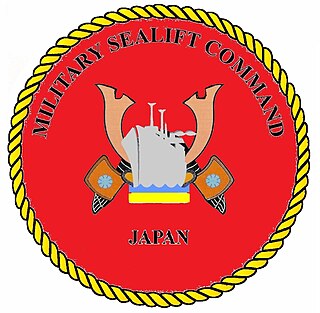
Military Sealift Command Japan (MSC Japan) (軍事海上輸送司令部 (MSC) 日本) is an Echelon IV Command of the United States Navy responsible for training, equipping and maintaining Military Sealift Command's government-owned, government-operated sealift ships throughout the country of Japan. Headquartered in Yokohama at Yokohama North Dock and co-located with the US Army 836th Transportation Battalion, MSC Japan is Commanded by an Active Duty Naval Officer and staffed with the following organizational Departments: N1 (Administration), N3 (Operations/Port Operations), N4 (Logistics), N6 (Information & Technology Support), N7 (Port Engineer), N8 (Accounting), and N10 (Contract Support). MSC Japan operates two warehouses, one at North Dock (MSC's largest overseas warehouse) and one in Sasebo, Japan. These facilities provide logistics support for all MSC units operating within the Pacific theater.
